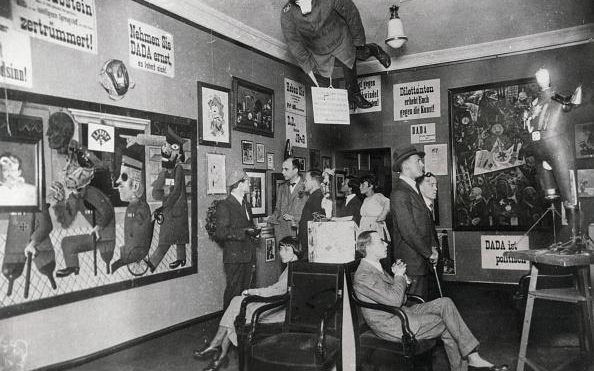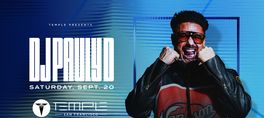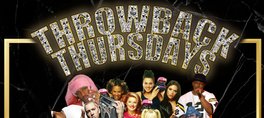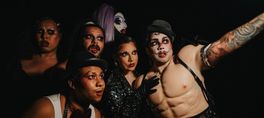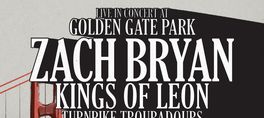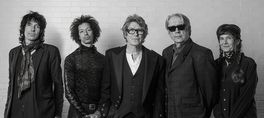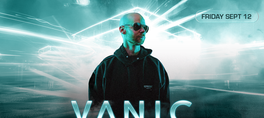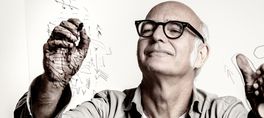Dada came into full bloom in the city of Berlin. The sheer creative drive, aggression, and incendiary political agendas exploded onto the art scene sending ripples across Europe. Artists such as Richard Huelsenbeck, Raoul Haussmann, Hannah Hoch, John Heartfield, Wieland Herzfelde, George Groz, Walter Mehring, Franz Jung, and many others all played a part. Through exhibits, manifestos, staged lectures, poetry readings, and performances the Berlin Dadaists developed radical political and aesthetic stances that attacked artistic conventions, reactionary political views such as Nazism, and capitalism itself.
Three Sessions followed by a roundtable discussion moderated by Frederick Young
Session One - Thomas Haakenson - Title: The Science of Berlin Dada - Dada's fascination with disruption and revolution led the group's members to explore all areas of everyday life. Chief among these "non-artistic" fascinations was science and, more specifically, the methodologies and assumptions of empirical scientific research. Dada science, in contrast, was weird science--of the best, most exciting variety. In this talk, Haakenson examines the explorations into the realms of science by members of Berlin Dada. From sense physiology to sexology, from the workings of the mind to the trappings of the body, Haakenson examines how Dada's efforts at subterfuge exposed and challenged science in the most playful, productive of ways.
Session Two - Mel Gordon - Title: Dada Berlin: A History Of Performance 1918-1920 - In the years 1918, 1919, and 1920, the Berlin Dada movement, mounting less than thirty productions, exerted a formidable, if indirect, influence over the development of the German Theater. This influence wold later lead to the dismantling of Expressionism as the dominant theatrical force in Central Europe. Retooling the theories and performance techniques they inherited from the Futurists and the Zurich Dadas to their own specifications, the Berlin Dadas introduced the use of pure -onomatopeotic or vowel-sound and abstract movement, improvisation, simultaneous and illogical actions, vernal and physical assault on the spectator, anti-illusionist scenic design, and the incorporation of popular entertainments, such as cabaret and cinema, into German performance. The Berlin Dadas laid the foundations for many of the anti-illusionist movements of the post-World War One era -Piscator's Epic Theater, the agitational reviews of the German Communist Party (KDP), Oscar Schlemmer's theater workshop at the Bau Haus, the constructivist experiments of El Lissitzky and Frederick Kiesler in in Hanover and Vienna, and Jiri Frejka's Devetsil group in Prague.
Session Three - Jed Rasula - Title: Club Dada in Print - Club Dada in Berlin was a mock-earnest organization, ostensibly addressing everything from the political crisis to social hygiene and sexual dysfunction. The primary medium of Club Dada was its publication, Der Dada. This was one of several periodicals, including Jedermann sein eigner Fußball, Der blutige Ernst and Die Pleite, that epitomize the aggressive wit of Dada in Berlin. Typographic ingenuity, combined with the calculated visual assault of photomontage, characterize these ventures. There were other publications as well, including books by Raoul Hausmann, Walter Mehring, and George Grosz, extending even to Flanders in the flamboyant and provocative work of Paul van Ostaijen, who frequented the Dada activities in Berlin.
This event is part of the Dada World Fair. For more information, please visit https://www.dadaworldfair.net
show less
Three Sessions followed by a roundtable discussion moderated by Frederick Young
Session One - Thomas Haakenson - Title: The Science of Berlin Dada - Dada's fascination with disruption and revolution led the group's members to explore all areas of everyday life. Chief among these "non-artistic" fascinations was science and, more specifically, the methodologies and assumptions of empirical scientific research. Dada science, in contrast, was weird science--of the best, most exciting variety. In this talk, Haakenson examines the explorations into the realms of science by members of Berlin Dada. From sense physiology to sexology, from the workings of the mind to the trappings of the body, Haakenson examines how Dada's efforts at subterfuge exposed and challenged science in the most playful, productive of ways.
Session Two - Mel Gordon - Title: Dada Berlin: A History Of Performance 1918-1920 - In the years 1918, 1919, and 1920, the Berlin Dada movement, mounting less than thirty productions, exerted a formidable, if indirect, influence over the development of the German Theater. This influence wold later lead to the dismantling of Expressionism as the dominant theatrical force in Central Europe. Retooling the theories and performance techniques they inherited from the Futurists and the Zurich Dadas to their own specifications, the Berlin Dadas introduced the use of pure -onomatopeotic or vowel-sound and abstract movement, improvisation, simultaneous and illogical actions, vernal and physical assault on the spectator, anti-illusionist scenic design, and the incorporation of popular entertainments, such as cabaret and cinema, into German performance. The Berlin Dadas laid the foundations for many of the anti-illusionist movements of the post-World War One era -Piscator's Epic Theater, the agitational reviews of the German Communist Party (KDP), Oscar Schlemmer's theater workshop at the Bau Haus, the constructivist experiments of El Lissitzky and Frederick Kiesler in in Hanover and Vienna, and Jiri Frejka's Devetsil group in Prague.
Session Three - Jed Rasula - Title: Club Dada in Print - Club Dada in Berlin was a mock-earnest organization, ostensibly addressing everything from the political crisis to social hygiene and sexual dysfunction. The primary medium of Club Dada was its publication, Der Dada. This was one of several periodicals, including Jedermann sein eigner Fußball, Der blutige Ernst and Die Pleite, that epitomize the aggressive wit of Dada in Berlin. Typographic ingenuity, combined with the calculated visual assault of photomontage, characterize these ventures. There were other publications as well, including books by Raoul Hausmann, Walter Mehring, and George Grosz, extending even to Flanders in the flamboyant and provocative work of Paul van Ostaijen, who frequented the Dada activities in Berlin.
This event is part of the Dada World Fair. For more information, please visit https://www.dadaworldfair.net
Dada came into full bloom in the city of Berlin. The sheer creative drive, aggression, and incendiary political agendas exploded onto the art scene sending ripples across Europe. Artists such as Richard Huelsenbeck, Raoul Haussmann, Hannah Hoch, John Heartfield, Wieland Herzfelde, George Groz, Walter Mehring, Franz Jung, and many others all played a part. Through exhibits, manifestos, staged lectures, poetry readings, and performances the Berlin Dadaists developed radical political and aesthetic stances that attacked artistic conventions, reactionary political views such as Nazism, and capitalism itself.
Three Sessions followed by a roundtable discussion moderated by Frederick Young
Session One - Thomas Haakenson - Title: The Science of Berlin Dada - Dada's fascination with disruption and revolution led the group's members to explore all areas of everyday life. Chief among these "non-artistic" fascinations was science and, more specifically, the methodologies and assumptions of empirical scientific research. Dada science, in contrast, was weird science--of the best, most exciting variety. In this talk, Haakenson examines the explorations into the realms of science by members of Berlin Dada. From sense physiology to sexology, from the workings of the mind to the trappings of the body, Haakenson examines how Dada's efforts at subterfuge exposed and challenged science in the most playful, productive of ways.
Session Two - Mel Gordon - Title: Dada Berlin: A History Of Performance 1918-1920 - In the years 1918, 1919, and 1920, the Berlin Dada movement, mounting less than thirty productions, exerted a formidable, if indirect, influence over the development of the German Theater. This influence wold later lead to the dismantling of Expressionism as the dominant theatrical force in Central Europe. Retooling the theories and performance techniques they inherited from the Futurists and the Zurich Dadas to their own specifications, the Berlin Dadas introduced the use of pure -onomatopeotic or vowel-sound and abstract movement, improvisation, simultaneous and illogical actions, vernal and physical assault on the spectator, anti-illusionist scenic design, and the incorporation of popular entertainments, such as cabaret and cinema, into German performance. The Berlin Dadas laid the foundations for many of the anti-illusionist movements of the post-World War One era -Piscator's Epic Theater, the agitational reviews of the German Communist Party (KDP), Oscar Schlemmer's theater workshop at the Bau Haus, the constructivist experiments of El Lissitzky and Frederick Kiesler in in Hanover and Vienna, and Jiri Frejka's Devetsil group in Prague.
Session Three - Jed Rasula - Title: Club Dada in Print - Club Dada in Berlin was a mock-earnest organization, ostensibly addressing everything from the political crisis to social hygiene and sexual dysfunction. The primary medium of Club Dada was its publication, Der Dada. This was one of several periodicals, including Jedermann sein eigner Fußball, Der blutige Ernst and Die Pleite, that epitomize the aggressive wit of Dada in Berlin. Typographic ingenuity, combined with the calculated visual assault of photomontage, characterize these ventures. There were other publications as well, including books by Raoul Hausmann, Walter Mehring, and George Grosz, extending even to Flanders in the flamboyant and provocative work of Paul van Ostaijen, who frequented the Dada activities in Berlin.
This event is part of the Dada World Fair. For more information, please visit https://www.dadaworldfair.net
read more
Three Sessions followed by a roundtable discussion moderated by Frederick Young
Session One - Thomas Haakenson - Title: The Science of Berlin Dada - Dada's fascination with disruption and revolution led the group's members to explore all areas of everyday life. Chief among these "non-artistic" fascinations was science and, more specifically, the methodologies and assumptions of empirical scientific research. Dada science, in contrast, was weird science--of the best, most exciting variety. In this talk, Haakenson examines the explorations into the realms of science by members of Berlin Dada. From sense physiology to sexology, from the workings of the mind to the trappings of the body, Haakenson examines how Dada's efforts at subterfuge exposed and challenged science in the most playful, productive of ways.
Session Two - Mel Gordon - Title: Dada Berlin: A History Of Performance 1918-1920 - In the years 1918, 1919, and 1920, the Berlin Dada movement, mounting less than thirty productions, exerted a formidable, if indirect, influence over the development of the German Theater. This influence wold later lead to the dismantling of Expressionism as the dominant theatrical force in Central Europe. Retooling the theories and performance techniques they inherited from the Futurists and the Zurich Dadas to their own specifications, the Berlin Dadas introduced the use of pure -onomatopeotic or vowel-sound and abstract movement, improvisation, simultaneous and illogical actions, vernal and physical assault on the spectator, anti-illusionist scenic design, and the incorporation of popular entertainments, such as cabaret and cinema, into German performance. The Berlin Dadas laid the foundations for many of the anti-illusionist movements of the post-World War One era -Piscator's Epic Theater, the agitational reviews of the German Communist Party (KDP), Oscar Schlemmer's theater workshop at the Bau Haus, the constructivist experiments of El Lissitzky and Frederick Kiesler in in Hanover and Vienna, and Jiri Frejka's Devetsil group in Prague.
Session Three - Jed Rasula - Title: Club Dada in Print - Club Dada in Berlin was a mock-earnest organization, ostensibly addressing everything from the political crisis to social hygiene and sexual dysfunction. The primary medium of Club Dada was its publication, Der Dada. This was one of several periodicals, including Jedermann sein eigner Fußball, Der blutige Ernst and Die Pleite, that epitomize the aggressive wit of Dada in Berlin. Typographic ingenuity, combined with the calculated visual assault of photomontage, characterize these ventures. There were other publications as well, including books by Raoul Hausmann, Walter Mehring, and George Grosz, extending even to Flanders in the flamboyant and provocative work of Paul van Ostaijen, who frequented the Dada activities in Berlin.
This event is part of the Dada World Fair. For more information, please visit https://www.dadaworldfair.net
show less
Date/Times:
530 Bush Street, San Francisco, CA 94108
The Best Events
Every Week in Your Inbox
From Our Sponsors
UPCOMING EVENTS
Great suggestion! We'll be in touch.
Event reviewed successfully.
